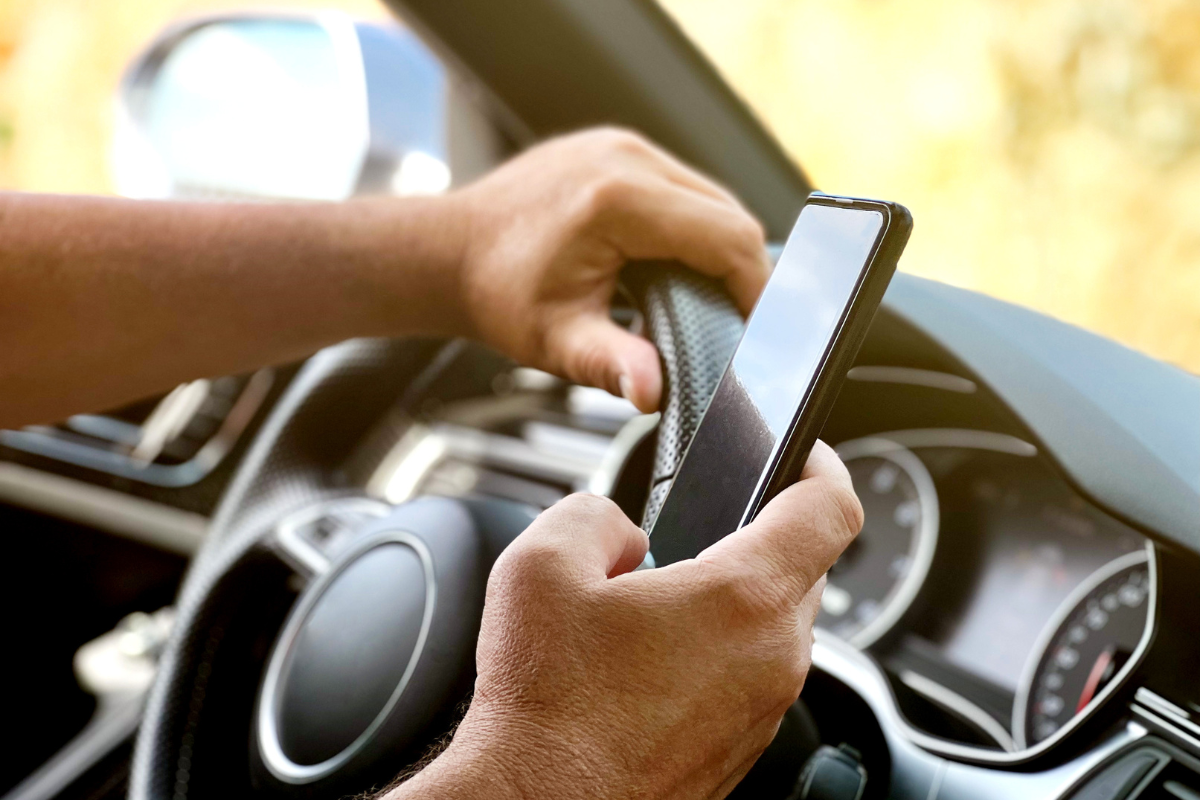
Distracted driving is driving while engaging in other activities that distract the driver’s attention from the road. Experts have identified three types of distracted driving: manual, visual, and cognitive.
- Manual: Distractions are caused by using your hands for anything other than steering the vehicle. This includes adjusting the radio, running through a playlist on your phone, or looking for your sunglasses.
- Visual: Distractions that take your eyes off the road. Common types of visual distractions include texting, reading billboards, or looking at off-road activity or scenery.
- Cognitive: Distractions that take your mind off driving include talking on the phone, lack of sleep, or consuming alcohol, illegal drugs, or prescription medications against medical advice.
Distracted Driving Statistics
According to the National Highway Traffic Safety Administration, distracted driving claimed 2,841 lives in 2018. Among those killed: 1,730 drivers, 605 passengers, 400 pedestrians, and 77 bicyclists. According to the Wisconsin Department of Transportation, the typical distraction requires the driver to take their attention off driving for less than five seconds, and if they are going 55 miles per hour, this means the driver has traveled the length of a football field without paying attention. In Wisconsin in 2015, there were 24,089 vehicle crashes related to distracted driving, which means there is a distracted driving crash that happened somewhere in Wisconsin every 22 minutes.
Common Types of Distracted Driving
There are many things that can result in distraction, and it is your job as a driver to avoid things that can cause your attention to waver. Common causes of distracted driving include:
- Eating or drinking
- Adjusting the music
- Rowdy passengers or multiple passengers
- Pets as passengers
- Trying to read a map or a GPS device
- Calling, texting, or checking emails
When a person drives while distracted, it is dangerous not only for them but also for the other drivers nearby. Distraction can result in lane deviation, running a stop sign or red light, or veering off the roadway, which can cause a collision with another vehicle. Additionally, inattentive drivers may not notice cyclists and pedestrians sharing the roadway, which can put them at risk of devastating injuries.
Any one of these forms of distracted driving is enough to cause an accident.
Distracted Driving Laws in Wisconsin
Although laws vary from state to state, these are the distracted driving laws in Wisconsin. It is illegal to use a hand-held mobile device while driving for any driver with a probationary license or instruction permit (except to report an emergency). It is illegal to use a hand-held mobile device when driving through a road work zone, and texting while driving is against the law for ALL drivers in Wisconsin.
There is also a law in Wisconsin under Wisconsin Statute 346.89 that states no one may perform any activity “that interferes or reasonably appears to interfere” with the ability to drive. This law is vague, but it does give the courts a lot of room for interpretation.
Discovering that the other driver was involved in some distracted driving conduct can help prove that an auto accident was not your fault if you have been in an accident. Initially, law enforcement is responsible for investigating an injury crash to determine if the at-fault driver was distracted. This includes searching the car for evidence of distraction or pulling cell phone records.
Whenever possible, the victim (or passenger) should take photos of the car accident scene. These pictures may show evidence of what was distracting the other driver and other valuable information about the injury accident.
Should I Hire an Attorney?
Consider contacting a personal injury attorney immediately after your accident. A knowledgeable personal injury attorney can request the preservation of video from traffic control cameras, police dash-cam, and police body cameras. Typically, the request must be made within 2-4 days of the accident, or the video will be taped over. On-scene videos can show evidence of distracted driving that can greatly assist in proving your injury claim.
A personal injury attorney can subpoena the records if they don’t investigate driver’s cell phone records at the time of a crash. A personal injury attorney can also hire an investigator to conduct a more thorough examination of the crash. For example, the investigator can locate the other party’s vehicle and photograph the interior. Key types of evidence, such as spilled food or used reading material on the front seat, can shed light on what was going on before the crash. These experienced investigators know what to look for and may find items overlooked by victims or law enforcement.
Getting the right help soon after a crash puts you in the best possible position for fair and full compensation. Connect with us today to discuss the details of your case.